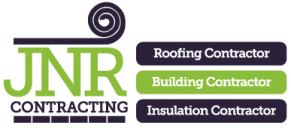Building maintenance is an essential component of property management that ensures the safety, functionality, and aesthetic appeal of structures over time.
Effective maintenance not only helps in extending the lifespan of a building but also significantly enhances its value. Property owners and managers often face a variety of challenges that can affect the stability and usability of their buildings.
Addressing these challenges promptly and effectively is crucial in preventing minor issues from becoming major setbacks, thus ensuring that the building remains a safe and pleasant place for its occupants.
Despite the apparent simplicity of building maintenance, many find it a complex task laden with unexpected difficulties. These challenges range from natural wear and tear to compliance with ever-changing building regulations.
Understanding these issues and preparing strategies to manage them effectively can save considerable time and resources.
This blog explores some of the most common maintenance challenges and provides practical advice on how to address them, ensuring your building remains in top condition and continues to meet the needs of its users.
Common Challenges
One of the most pervasive challenges in building maintenance is weather damage. Buildings are continuously exposed to the elements, leading to significant wear over time.
In regions with extreme weather conditions, the impact can be even more pronounced, leading to roof damage from heavy snowfall or water ingress during prolonged periods of rain.
Similarly, intense sunlight can fade exterior finishes and degrade materials like wood and plastic, necessitating frequent refurbishment.
Another frequent issue is the natural wear and tear that all buildings experience. Over time, fixtures and fittings can become dated or cease functioning as efficiently as they once did.
Flooring can wear down, paint can chip, and mechanical systems like heating and plumbing can break down. These problems are inevitable, regardless of the building’s initial quality or the care taken during its construction.
Regular inspection and maintenance become essential to manage these degenerative processes effectively.
Strategies to Overcome Challenges
To mitigate these challenges, regular inspections are indispensable. By scheduling periodic checks, property managers can identify potential problems before they escalate into costly repairs.
These inspections should cover all aspects of the building, from the structural integrity of roofs and foundations to the efficiency of electrical and plumbing systems.
Implementing a routine maintenance schedule helps in the early detection of issues, allowing for timely interventions that can prevent further damage and extend the building’s lifespan.
Using quality materials for any repairs or renovations is also crucial. Opting for high-quality, durable materials might have a higher initial cost but can significantly reduce the frequency of repairs and maintenance required in the long run.
Moreover, engaging with professionals for installation and maintenance ensures that the work is done to a high standard, which can further prolong the longevity of the materials and the building as a whole.
Professional advice can also be invaluable in staying updated with the latest building regulations and technological advancements, ensuring compliance and enhancing the property’s safety and functionality.
Updated Approaches and Technologies
The adoption of new technologies and updated approaches in building maintenance can provide significant advantages.
For instance, the use of smart technology can help in monitoring building systems in real-time, allowing for immediate response to issues like leaks or electrical faults.
Smart sensors can detect abnormalities in structural integrity or environmental conditions, triggering alerts for necessary checks or maintenance.
Moreover, advancements in building materials and techniques have introduced new possibilities for extending the life of building components.
Innovative products such as self-healing concrete or highly durable synthetic roofing materials offer longer lifespans and better performance under adverse conditions.
Adopting these technologies not only enhances the efficiency of maintenance operations but also reduces the environmental impact of frequent repairs.
Conclusion
Effectively managing building maintenance requires a proactive approach and a clear understanding of the common challenges that buildings face.
By implementing regular inspections and investing in quality materials and professional services, property managers can significantly alleviate these issues.
Furthermore, embracing new technologies and updated methodologies in building maintenance can lead to more sustainable and cost-effective management practices.
Maintaining a building is not just about fixing what is broken; it is about preventing problems before they occur and ensuring that the property remains a safe, comfortable, and attractive space for everyone.
With careful planning and execution, the challenges of building maintenance can be managed effectively, preserving the value and functionality of the property for many years to come.
